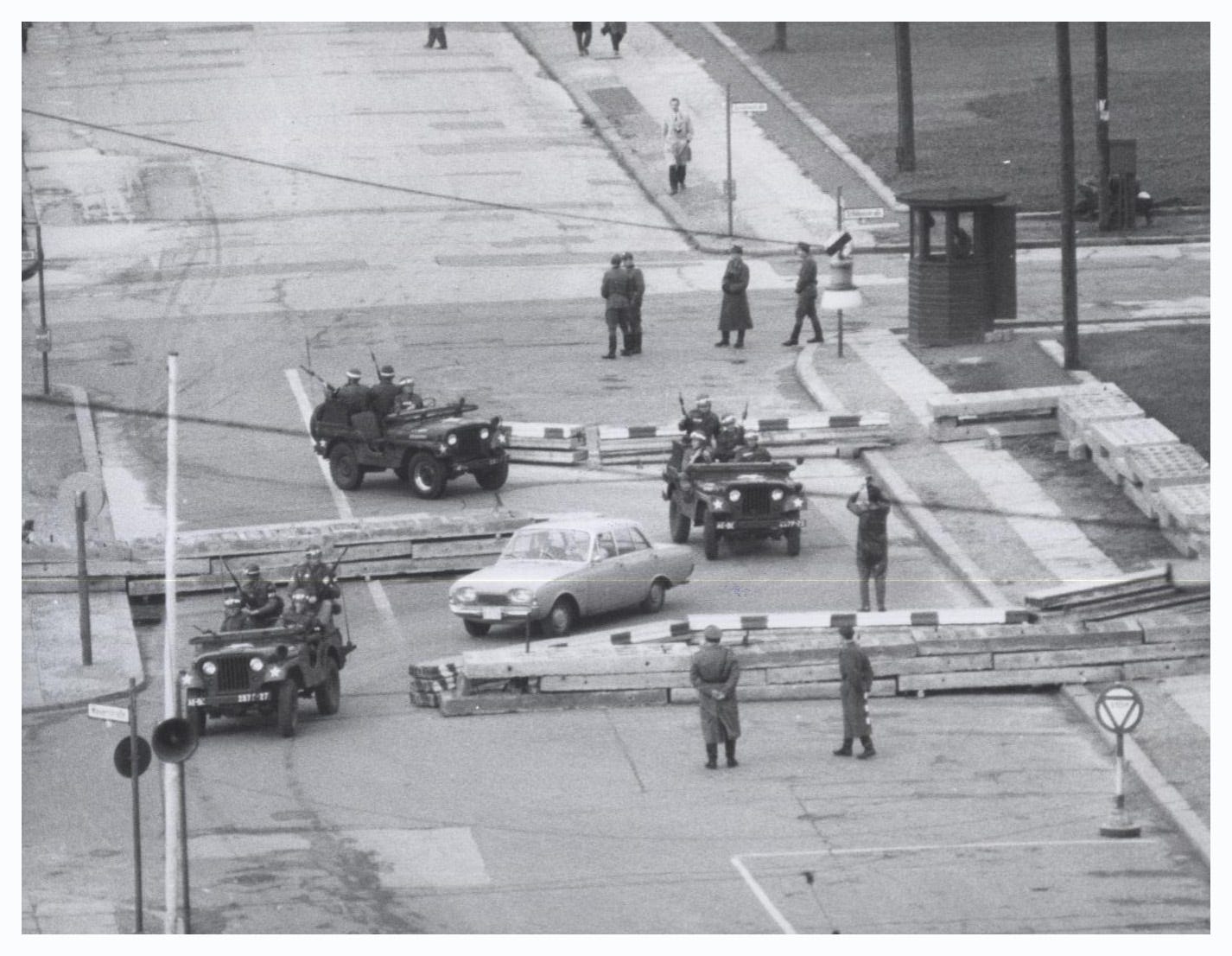Joe Trevithick
23Jul 2014
 The Trigonist emblem also seemed to take its cue from the simplicity of many fascist symbols. The national insignia consisted of just a white circle with a green triangle in the center.
The Trigonist emblem also seemed to take its cue from the simplicity of many fascist symbols. The national insignia consisted of just a white circle with a green triangle in the center.
 The fictional background information explained that the Trigonists and their allies were in complete control of New England and Florida by 1947. Secret agents also fomented a rebellion along the Kentucky-Tennessee border and tried to invade California.
The fictional background information explained that the Trigonists and their allies were in complete control of New England and Florida by 1947. Secret agents also fomented a rebellion along the Kentucky-Tennessee border and tried to invade California.
23Jul 2014
Fake military blended World War II and early Cold War fears
In the late 1940s, the U.S. Army created an entire fake military that it could use for realistic training. The ground combat branch developed a deep and complex history for this “aggressor” that reflected concerns from World War II and the emerging Cold War.
The basic premise, as described in a series of official field manuals, was that a “totalitarian state … [had] established a fascist-type of organization called the Circle Trigon Party” in a devastated post-war Western Europe. These “Circle Trigonists” clearly were aping the Nazis.
The “official” history stated that the party formed in Bavaria, Germany before spreading into Tyrol in Austria, southern France, northern Italy and Spain. Washington feared that many Nazis had fled to these locales after World War II.
 The Trigonist emblem also seemed to take its cue from the simplicity of many fascist symbols. The national insignia consisted of just a white circle with a green triangle in the center.
The Trigonist emblem also seemed to take its cue from the simplicity of many fascist symbols. The national insignia consisted of just a white circle with a green triangle in the center.
“Aggressor” military campaigns in the United States from the Army’s alternate 1940s history. Army map
The ground combat branch also clearly was worried about other enemies besides resurgent fascists. Still, early versions of the Trigonist back story didn’t mention the word “communist” at all.
But the Circle Trigon’s three-man triumvirate government could describe a Soviet-style “people’s committee” just as well as it did the Germany-Italy-Japan axis. The movement’s ideology also “freely used the terms ‘democracy,’ ‘the people’ and other similar terms”—something that was also true of Marxist-Leninist groups.
Later editions of the aggressor manuals eventually spelled out the connection, defining communists as Trigonist sympathizers and potential collaborators.
This communist connection—first implied and then explicit—neatly played into the public fear of Soviet expansion. From the very beginning, the Army’s alternate history included an invasion of the continental United States.
 The fictional background information explained that the Trigonists and their allies were in complete control of New England and Florida by 1947. Secret agents also fomented a rebellion along the Kentucky-Tennessee border and tried to invade California.
The fictional background information explained that the Trigonists and their allies were in complete control of New England and Florida by 1947. Secret agents also fomented a rebellion along the Kentucky-Tennessee border and tried to invade California.
Central Intelligence Agency photo
The main rationale for this fiction was to give the Army an excuse to train in these areas. But the Aggressor documentation also specifically named the real American Communist Party as a possible ally of the fake adversary.
In addition, the training exercises against this trumped-up enemy sometimes included civilian populations. In 1952 the military turned Lampasas County in Texas into a virtual battleground between a Trigonist invader and liberating Army units.
82nd Airborne Division soldiers role-played the enemy forces wearing special uniforms and insignias. Troops set up the kind of checkpoints the world had seen in occupied Germany right after World War II—and which still existed in 1961, as seen in the picture above from the Berlin Crisis.
In spite of all of this, the documents insisted that the Circle Trigon represented no real countries or militaries. Both the 1951 Handbook on Aggressor Military Forces and the 1959 guide Aggressor, The Maneuver Enemyinsisted that any resemblances to real nations, enemy forces or individuals were just coincidences.
In order to lend some weight to this assertion, the Army declared that the Trigonists spoke Esperanto, an invented language from the early 20th century.
The Army continued to train against the Circle Trigon until 1978. The ground combat branch replaced them with the “Krasnovians”—which it admitted to modeling on Soviet-style forces. Since then, American troops have squared off against a number of other fake militaries, as well.
You can follow Joe Trevithick on Twitter at @FranticGoat. Sign up for a daily War is Boring email update here. Subscribe to WIB’s RSS feed here and follow the main page here.
No comments:
Post a Comment